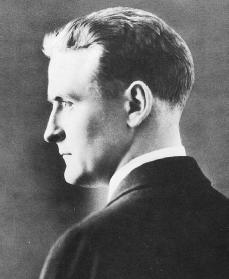 [This post was co-authored with Alan Engelstad and Karl Moore, and was previously published in shorter form under the title Nudging Your Way to Real Change at Forbes.com. Alan is an adjunct professor at McGill’s Desaultel Faculty of Management where he teaches this approach at the International Masters for Health Leadership. Karl is a professor at the Desautels Faculty, McGill University in Montreal and an Associate Fellow at Green Templeton College, Oxford University. His blog, “Rethinking Leadership,” appears regularly at Forbes.com.]
[This post was co-authored with Alan Engelstad and Karl Moore, and was previously published in shorter form under the title Nudging Your Way to Real Change at Forbes.com. Alan is an adjunct professor at McGill’s Desaultel Faculty of Management where he teaches this approach at the International Masters for Health Leadership. Karl is a professor at the Desautels Faculty, McGill University in Montreal and an Associate Fellow at Green Templeton College, Oxford University. His blog, “Rethinking Leadership,” appears regularly at Forbes.com.]

The second oldest profession must be that of Change Management Guru. As early as the6th century BC, the philosopher Heraclitus might have been speaking to the ancient Greek equivalent of a corporate client when he said, “No man ever steps in the same river twice, for it is not the same river and he is not the same man.” A century later, another Greek philosopher, Diogenes, propounded, “Bury me on my face;” and when asked why,replied, “Because in a little while everything will be turned upside down.” Eight or more of Aesop’s Fables have been construed as advice on dealing with change. Change was clearly a force that had to be reckoned with, and dealing with change required a lot of sage advice.
Machiavelli took things to a whole new level in the 15thcentury when he wrote, “It must be considered that there is nothing more difficult tocarry out nor more doubtful of success nor more dangerous to handle than to initiate a new order of things.” You almost get the sense that Nicolo was priming a client for a good consulting gig, putting forward the notion that change is hard to manage.
be considered that there is nothing more difficult tocarry out nor more doubtful of success nor more dangerous to handle than to initiate a new order of things.” You almost get the sense that Nicolo was priming a client for a good consulting gig, putting forward the notion that change is hard to manage.
Moreover, in the past four decades, academic study of change and change management has grown explosively. Thousands of books on change and management have been published. Each author focuses on different approaches and offers different perspectives. Yet, with all of this advice to choose from, more than two out of three organizational change efforts fails. What is wrong with this picture?
Harvard professor emeritus John P. Kotter, one of the leading authorities on leadership and change, noted for his 8-step process for implementing successful transformations, might suggest that it is the failure of organizational leaders to create a sense of urgency  around the need to change. Kotter’s Harvard colleague, Michael Beer might advise that it is the failure to effectively reconcile and integrate Theory E and Theory O approaches that trips up those trying to carry out change efforts. (Theory E supports top-down, planned change for economic value, while Theory O supports emergent, capacity building developmental change.) Harold L. Sirkin and his colleagues from Boston Consulting Group would probably cite research that indicates too much emphasis on “soft” factors — such as culture, leadership and motivation — at the expense of focus on “hard” factors – effort duration, people’s capabilities, executive commitment, and stamina — as a principal reason for change effort failures.
around the need to change. Kotter’s Harvard colleague, Michael Beer might advise that it is the failure to effectively reconcile and integrate Theory E and Theory O approaches that trips up those trying to carry out change efforts. (Theory E supports top-down, planned change for economic value, while Theory O supports emergent, capacity building developmental change.) Harold L. Sirkin and his colleagues from Boston Consulting Group would probably cite research that indicates too much emphasis on “soft” factors — such as culture, leadership and motivation — at the expense of focus on “hard” factors – effort duration, people’s capabilities, executive commitment, and stamina — as a principal reason for change effort failures.
With all due respect to these noted academics and practitioners, they may not only be missing the boat, they are probably trying to sail in the wrong ocean. All of the underlying theories imply that change that takes months or years. What if change happened spontaneously? Could anyone distinguish the emergent from the programmatic, emphasize coping over culture, or keep communication flowing to fan urgency? If change happened quickly on its own and in the right direction, these things wouldn’t matter.
Whenever we’ve put this suggestion to a group, we get three typical responses:
- Nonsense!
- If only it were possible….
- I knew it didn’t need to be so difficult!
 Yes, it is nonsense to think that change can happen spontaneously if we look at it through the familiar Newtonian lens that views stability as the default setting of the universe, with change requiring force. But it becomes entirely possible when we understand from complexity science that change is actually the default setting. Change is constantly released unless it is constrained.
Yes, it is nonsense to think that change can happen spontaneously if we look at it through the familiar Newtonian lens that views stability as the default setting of the universe, with change requiring force. But it becomes entirely possible when we understand from complexity science that change is actually the default setting. Change is constantly released unless it is constrained.
It is much easier to alter just one or two constraints to release change than to identify  and manage every factor, every aspect, and every bit of commitment, belief, skill, knowledge and communication. But, when you intervene in a complex system, you want to be sure you are taming the tiger, not simply poking it with a stick.
and manage every factor, every aspect, and every bit of commitment, belief, skill, knowledge and communication. But, when you intervene in a complex system, you want to be sure you are taming the tiger, not simply poking it with a stick.
For the past two decades, the groundbreaking work of our colleague, Oxford philosopherand scientist Dr. James Wilk, has enabled delivery of quick, effective results to organizations facing seemingly intractable problems, through the design and implementation of what he calls Minimalist Interventions or Nudges. Unlike the large scale change efforts typically prescribed, these catalytic interventions rarely involve more than one or two carefully designed communications or simple actions that quickly – sometimes seemingly instantly – deliver the desired outcome.

Admittedly, it isn’t easy to find that one, perfect nudge to release exactly the change desired. More often than not, the nudge is used in areas seemingly irrelevant to the problem at hand. The actions designed must be highly leveraged. If they fail, no one notices. If they succeed, no one notices how it was done or even who was responsible.
The theory is complex, but the application and results are fascinating. If you think we’re kidding, here is a sampler of nudge-like interventions we helped design:
- A mortgage company experiencing rapidly growing losses from administrative errors in processing and packaging contracts for resale to investors, in spite of efforts by project teams and a special task force, turned things around within a month, nudged toward vastly improved risk management after the company president used a new approach to talking about the problem with his senior managers.
- Top producing salespeople paid lip service to the company’s policy of aggressive internal cross-selling, while lining their pockets via side-deals with competitors. The nudge to finally get internal cross-selling to take off? It was getting the most conspicuous violator to become a sudden champion by having the CEO offer him a special non-sales assignment.
- A company desperate to preserve retail prices in the face of widespread discounting by competitors re-energized its sales force and preserved prices on over 80% of all business written. What was the nudge? The CEO delivered a powerful metaphor at a sales meeting that changed the way the sales force viewed their relationship with their customers .
- A company’s misallocation of risk capital across business segments was driving poor decisions about business expansion due to inappropriate reporting of segment ROE — but entrenched interests seemed to make changes impossible. The chain of events that corrected the situation was triggered when a key senior executive stopped eating lunch at his desk every day.
- A sector-changing merger was in jeopardy because of turf wars between the finance functions of the merger partners. Special incentives and threats proved useless. The merger succeeded only when the CFO nudged the situation away from fear and distrust by sending a simple e-mail request inquiring after local schools.
All of these examples are real, documented cases. No culture change; no large-scale training programs; no programs at all. Carefully designed, small nudge-like interventions led to dramatic improvement.
Finding the operative constraints and choosing which to nudge involves carefully describing the desired outcome and using that as a complexity filter. Determining how to nudge a target constraint to get precisely the outcome desired is a collaborative design process involving many iterations. It’s a tough discipline to master, but it can be done.
The Minimalist Intervention approach offers a new paradigm for dealing with change, flying in the face of conventional wisdom on change management. We’ve seen the approach work with remarkable consistency, both as executives facing difficult problems and as analysts working alongside Wilk to design minimalist interventions. Kotter, Beer and Sorkin would probably laugh at the suggestion that minimalist intervention can do what is suggested here. But “they” laughed at Galileo about the orbits of the planets; and at Lister about antiseptic medicine; and at the innovators who came up with countless other paradigm shifting theories. Wilk may have the last laugh when it comes to dealing with change.




















